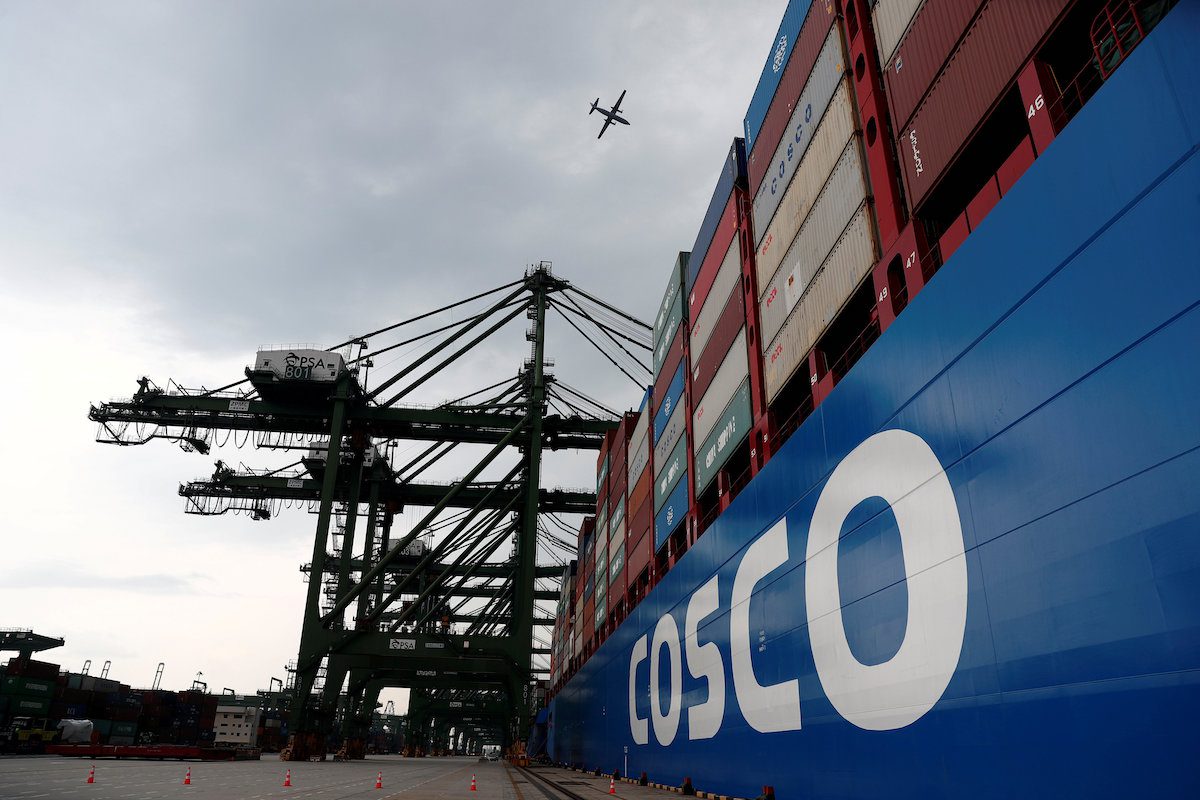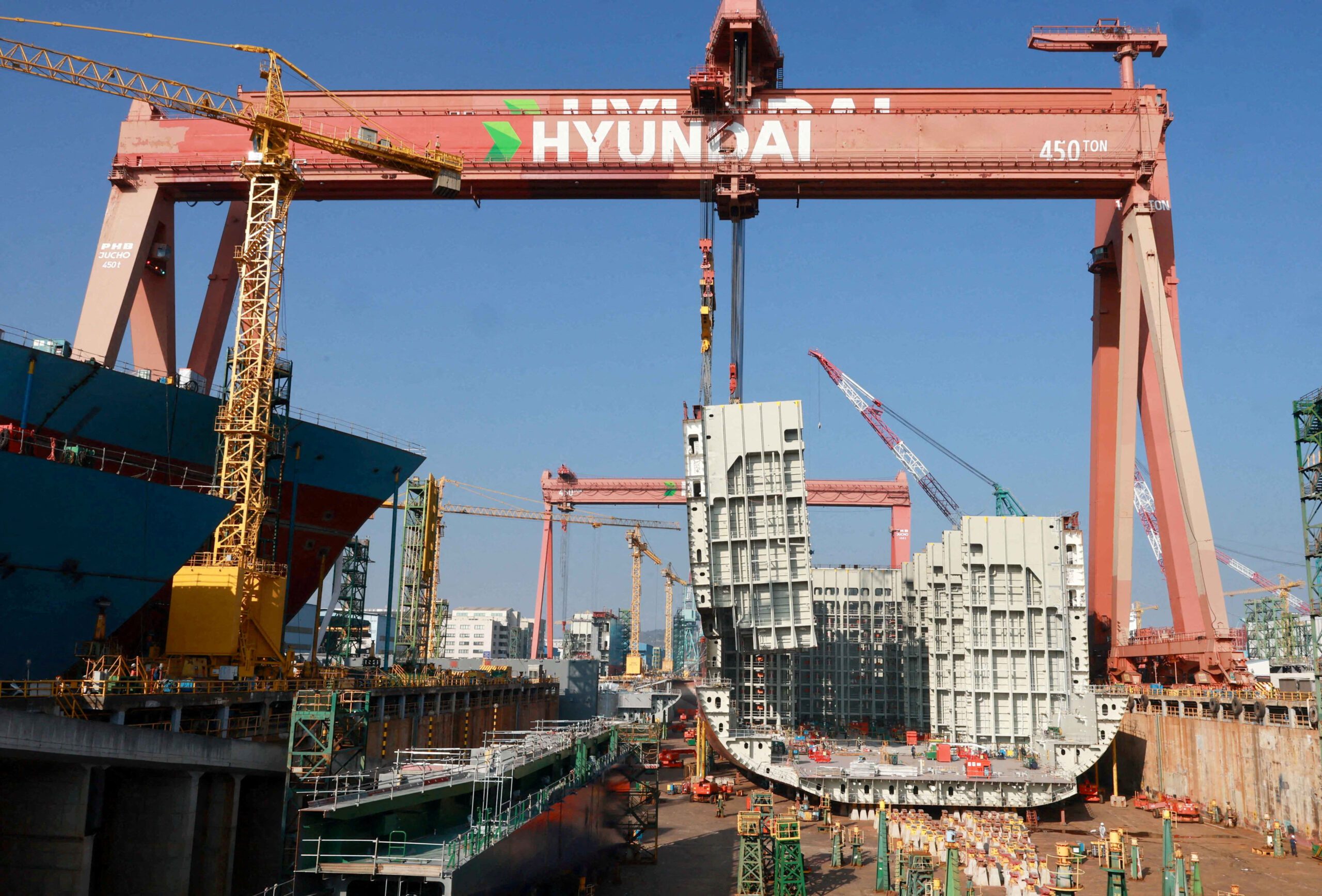President Trump praised South Korea’s acquisition and expansion of Philadelphia’s shipyard during his address to the Asia-Pacific Economic Cooperation CEO Summit on Wednesday, calling the facility’s transformation a centerpiece of U.S.-Korea maritime cooperation.
“And today we’re not really building ships and we’re going to start and we’re going to have a very thriving, very thriving shipbuilding industry and we’re working it with South Korea very much so. In fact, some of the people in this room, they bought the Philadelphia shipyard,” Trump said. “I think it’s going to be one of the most successful yards in the world anywhere in the world. It’s great.”
The remarks came as Trump and South Korean officials announced a $350 billion investment agreement with the United States, with $150 billion earmarked specifically for rebuilding American shipbuilding capacity.
Hanwha acquired Philly Shipyard for $100 million in December 2024 and has since announced aggressive expansion plans. In August, the company unveiled a $5 billion investment to install additional docks and quays that could boost the shipyard’s production from fewer than two vessels annually to as many as 20.
The expansion includes plans for two additional docks, three quays, and a potential new block assembly facility, representing what the company describes as a multibillion-dollar infrastructure commitment.
In August, Hanwha Shipping placed an order for 10 medium range oil and chemical tankers from the Philadelphia facility, marking the largest U.S. commercial vessel order in over two decades. The first tanker is expected for delivery by early 2029.
The company also ordered a second liquified natural gas carrier to be completed in the U.S., bringing the U.S. orderbook for LNG carriers to its highest level since the 1970s. The LNG carriers will be constructed through a joint model between Hanwha Ocean’s Korean facility and Hanwha Philly Shipyard, with the Philadelphia yard handling U.S. regulatory compliance and safety certifications.
The shipyard, the nation’s leading builder of commercial ocean-going ships, has delivered 30 commercial vessels since 2003, including six container vessels, 22 product tankers, two aframax tankers and three repair vessels. It currently holds a contract with TOTE Services for National Security Multi-Mission Vessels for the U.S. Maritime Administration, with three already delivered.
However, the expansion faces potential complications from escalating U.S.-China trade tensions. Beijing recently announced sanctions against five U.S.-linked subsidiaries of Hanwha Ocean as the two countries began charging additional port fees on each other’s vessels.
South Korea’s Minister of Defense Procurement Program Administration Seok Jong-gun previously acknowledged the challenge in a parliamentary hearing. “I don’t see how we can make all the materials and supplies for Philly Shipyard within the U.S.,” Seok said. “So if you’re going to get a lot of things to the U.S. from South Korea, and you have sanctions and all kinds of obstacles to doing that, I’d say there’s going to be an impact on MASGA eventually.”
Wednesday’s broader U.S.-Korea trade agreement also set tariffs on Korean auto and auto parts at 15 percent, down from 25 percent, putting them on par with Japanese competitors. The deal structures a $200 billion investment to be spread over multiple years at no more than $20 billion annually, with the remaining $150 billion dedicated to shipbuilding.
The announcement comes as a Senate subcommittee held a hearing on Tuesday examining how to revive U.S. commercial shipbuilding. Three industry experts told the Senate Committee on Commerce, Science, and Transportation’s Subcommittee on Coast Guard, Maritime, and Fisheries that the United States faces an urgent need to rebuild its commercial shipbuilding capacity in the face of decades of Chinese industrial targeting and declining domestic capacity.
The witnesses’ testimony made clear that while the challenge is substantial, the path forward exists through legislative action like the SHIPS for America Act, preservation of the Jones Act, innovative contracting approaches like the Vessel Construction Manager (VCM) model, and sustained government commitment.
The Trump Administration’s April Executive Order on Maritime Dominance directed development of a Maritime Action Plan to be delivered on November 5, aiming to align trade tools with industrial strategy, strengthen domestic shipbuilding and repair capacity, and consider a dedicated funding mechanism such as a maritime security trust fund.

 Join The Club
Join The Club










